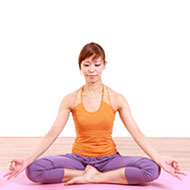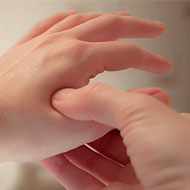The Psoas - Is It Killing Your Back?
Where and what is psoas?
The psoas is one of the largest muscles in the body and connects the lower portion of the spine to the femur (thigh bone). There is one on either side for each leg.
This muscle is so large simply because this is the only muscle that comes into play when your raise your foot. Every single time you lift your knee, the psoas muscle contracts.
Why is a tight psoas a problem?
There is a link between a tight psoas muscle and chronic back pain. As the psoas muscle connects the spine to the thigh, any tightness in this muscle can alter the shape of the spine. A psoas which is tight will therefore pull the vertebrae of the lower back out of alignment putting pressure on the spinal column.
When one psoas is tighter than the other, it is even worse. This is because, not only will it pull the spine forward but sideways as well, causing excruciating pain.
Exercises that will help relieve tightness in the psoas muscle
Every time you lift your knee or lift your body forward, keeping your leg straight, the psoas muscle contracts. Also, every time your leg stretches behind you, the psoas muscle lengthens. Exercises that pull your leg behind you will therefore stretch your psoas muscle. Below we give you a few exercises that will help relieve tight psoas muscles.
Warrior Pose (Virabhadrasana)
The warrior pose is one of the best ways of relieving a tight psoas muscle.
- Place one foot about 2 to 3 feet in front of the other so that the shin bone is perpendicular to the floor.
- Rotate the ankle of the other leg around 45 degrees and push it back until it forms a straight line from the hip to the ankle, with the thigh bone of the first leg parallel to the floor.
- Hold your hands above your head and arch your back without twisting your waist.
- Hold the position for 30 to 60 seconds and alternate between legs 3 to 4 times every day.
Kneeling Lunge (Anjaneasana)
The Kneeling Lunge is also very effective at relieving a tight psoas. It is easier to do than the Warrior Pose and is probably better for older or overweight people.
Thomas Stretch
The Thomas Stretch is used by doctors to check the flexibility of the hip. It is, however, a very good psoas stretch when held for 30 to 60 seconds.
Tips to avoid tight psoas
Below are a few tips to avoid tight psoas
- Do not sit continuously: When you sit for long periods of time, your muscle memory thinks that is the way for the muscle to be. It will therefore automatically contract the psoas muscle. Getting up now and then and stretching is a good way of relieving tight psoas. Make sure you never sit for more than half an hour at a stretch, without stretching.
- Do not overdo core exercises: Do not overdo on core exercises, especially sit ups and stomach crunches, because they tend to contract the psoas muscles. Make sure you do a Bow Pose (Dhanurasana) to stretch your muscles after this.
Many people pay no regard to the wear and tear which the body goes through when performing strenuous exercises. Unless you have a good trainer who knows how to help your relax after a session of core exercises, you may very well end up injuring your psoas muscles, which, in turn, will lead to considerable back and spine-related injuries and pain.
Read more articles from the General Discussion Category.

 Find Pose
Find Pose

